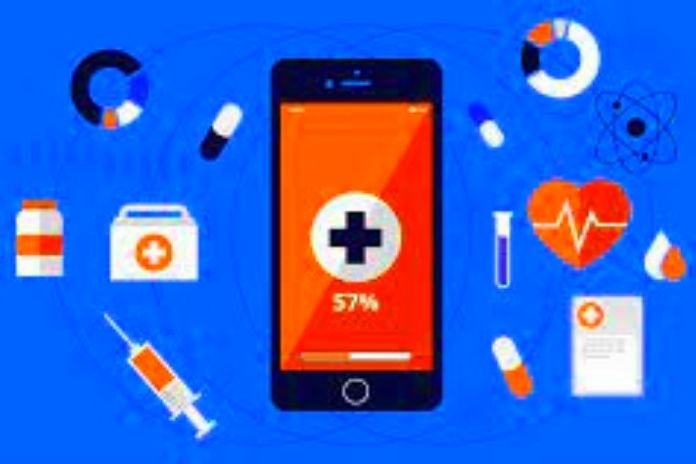Advantages Of IoT In Hospitals: Applications & Strategy
The Advantages Of IoT is a network of devices – such as cars, watches, and heart monitors – capable, through sensors and cameras of collecting data. And, through algorithms, analyzing it in real-time, making it intelligent.
As a result of advances in technologies such as cloud computing and concerns about the new coronavirus pandemic, hospitals, and the health ecosystem are undergoing a true transformation, which involves expanding access routes to health services and ways to take care. And many of them are carried out through a technology whose application is very natural in hospitals: the Internet of Things – IoT.
The Advantages Of IoT Applications In Hospitals
In hospitals, IoT is already used and has excellent potential for new uses in patient care and treatment stages and operations, such as:
- patient screening ;
- Predictive maintenance of equipment;
- Systems for monitoring vaccines ;
- Tracking supplies, medicines, and other assets such as OPMEs;
- Multi-parameter patient monitoring (heartbeat, blood pressure, blood glucose, temperature, etc.) in real-time, in person, or remotely;
- Correct management of medications in short or chronic treatments; and
- Monitoring systems for compliance with hygiene and cleanliness standards.
The Advantages Of IoT In Hospitals
The most significant benefits of IoT in hospitals are the possibility of monitoring in real-time, that is, consistency. Consequently, with the help of early detection of changes in processes, patients, and tools, supporting the decision-making of the clinical and administrative staff with a view to:
- increase access to health ;
- increase comfort and convenience by decentralizing the provision of health services;
- individualize and humanize health care;
- prevent and reduce risks such as hospital infections and hospitalization rates in intensive care units;
- improve the consistency of the quality of care;
- increase the efficiency and effectiveness of health care delivery;
- enable health actions and remote telemedicine treatments ;
- generate savings with unnecessary interventions or system maintenance; and
- Improve the patient experience with healthcare services.
5 Points To Consider In The Advantages Of IoT Strategy In Hospitals
IoT in hospitals is not without its attention points and challenges like all innovations. We will list five of them, in addition to others that come in their wake, which should be considered within an IoT strategy for hospitals.
Return On Investment (ROI)
Despite many opportunities, a moment of great fear and uncertainty emerged, especially after the impacts of the pandemic on health systems. So, more than enthusiasm, it takes investment and realism about the future to capture the right opportunities – which has been challenging.
In addition, it is essential to ensure that IoT projects are implemented and scaled correctly. More than the pure and straightforward innovative function, is there an ROI that justifies the investment in IoT within the hospital?
To this end, the role of IT must touch the scope of business and innovation, in addition to its role as a support area.
Technological Heterogeneity
Like all emerging technology, IoT in hospitals does not have a standard. Each vendor is entirely different from the other, as are protocols and policies.
The lack of maturity of the suppliers’ solutions generates, within hospitals, difficulties in knowledge and training of the workforce, but also related to integration with legacy technologies.
Complexity And Cost
IoT in hospitals is not alone but linked to other technologies that ensure connectivity and uninterrupted availability of its solutions, such as artificial intelligence and 5G, which still lack consistent evolution in the health market.
Therefore, the complexity and cost factors of applying IoT in hospitals have been the main inhibitors of technology adoption.
Scale
When starting from pilot projects to hospital-wide expansions, it isn’t easy to calculate the number of points needed in an entire room or hospital. So it quickly becomes a massive volume of evolution.
According to the IoT Snapshot survey, at this moment of escalation, the uninnovative organizational culture and the difficulty of integrating IoT with legacy systems are most felt.
End-To-End Security And Compliance
Security and privacy, as well as compliance with the legislation of a sector as regulated as health, are other significant difficulties in adopting IoT in hospitals.
As the number of connected devices increases, so do the potential doors for cybersecurity threats to enter and the need for security control.
In healthcare, these targets are particularly desirable to cybercriminals, according to David Hassman, Syniverse’s Head of Corporate Strategy and Development for Healthcare. The value of patient information, given its high level of sensitivity, is high. Furthermore, being part of a country’s infrastructure, an attack has significant financial and reputational consequences, which also draws the attention of cybercriminals. Any IoT strategy in hospitals must involve risk management, including people, processes, and tools.
The Advantages Of IoT In Hospitals: From Hype To Must-Have
The breadth of applications and benefits have made the application of IoT in hospitals no longer just exciting to become a must-have.
However, we are still in the early stages of realizing their full health potential. Like any expanding use case and application technology, IoT maturity consolidates as it gains relevance within organizations.
Also Read: Security In Industrial IoT: What Are The Challenges?
Share this content:












Post Comment